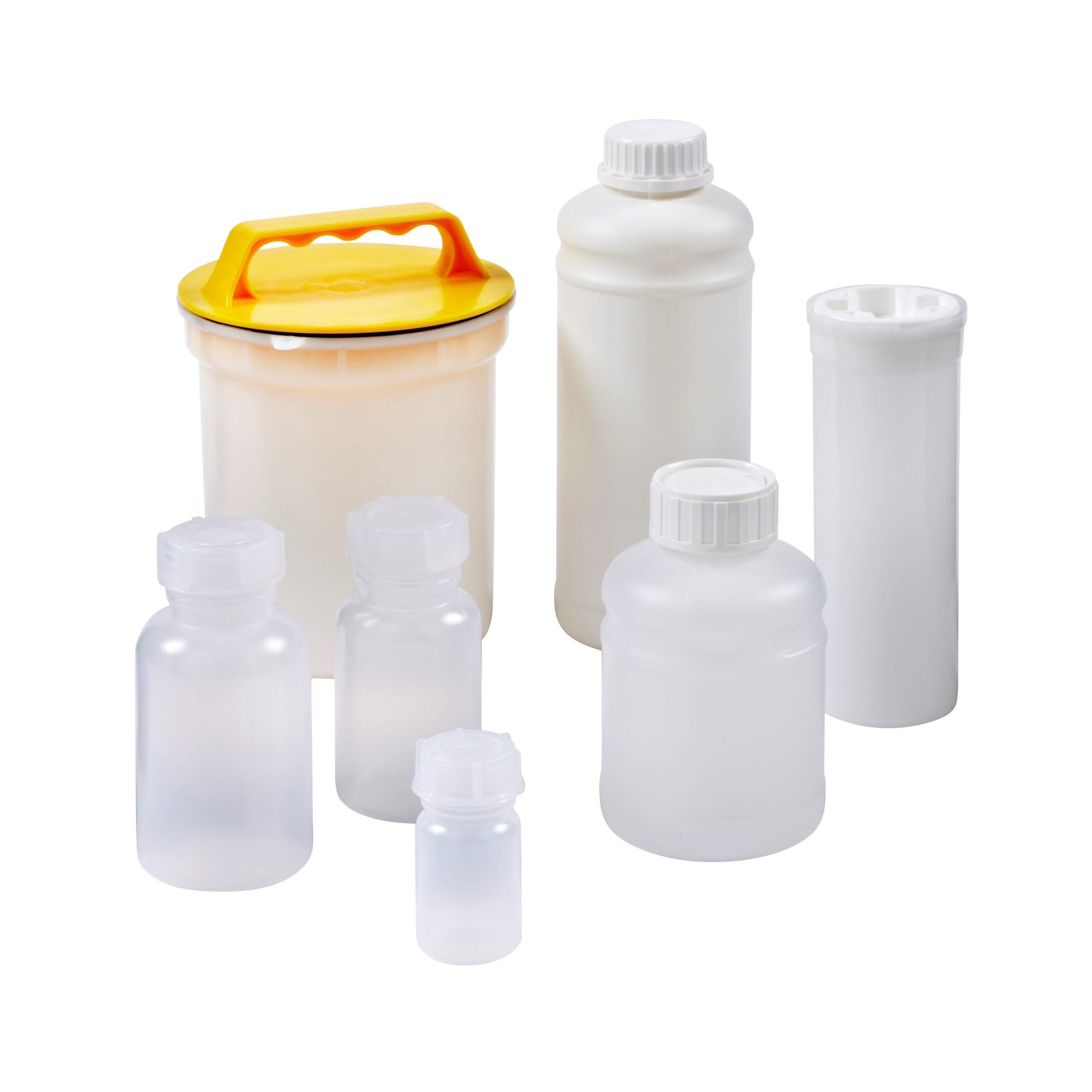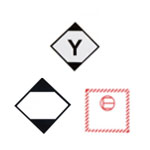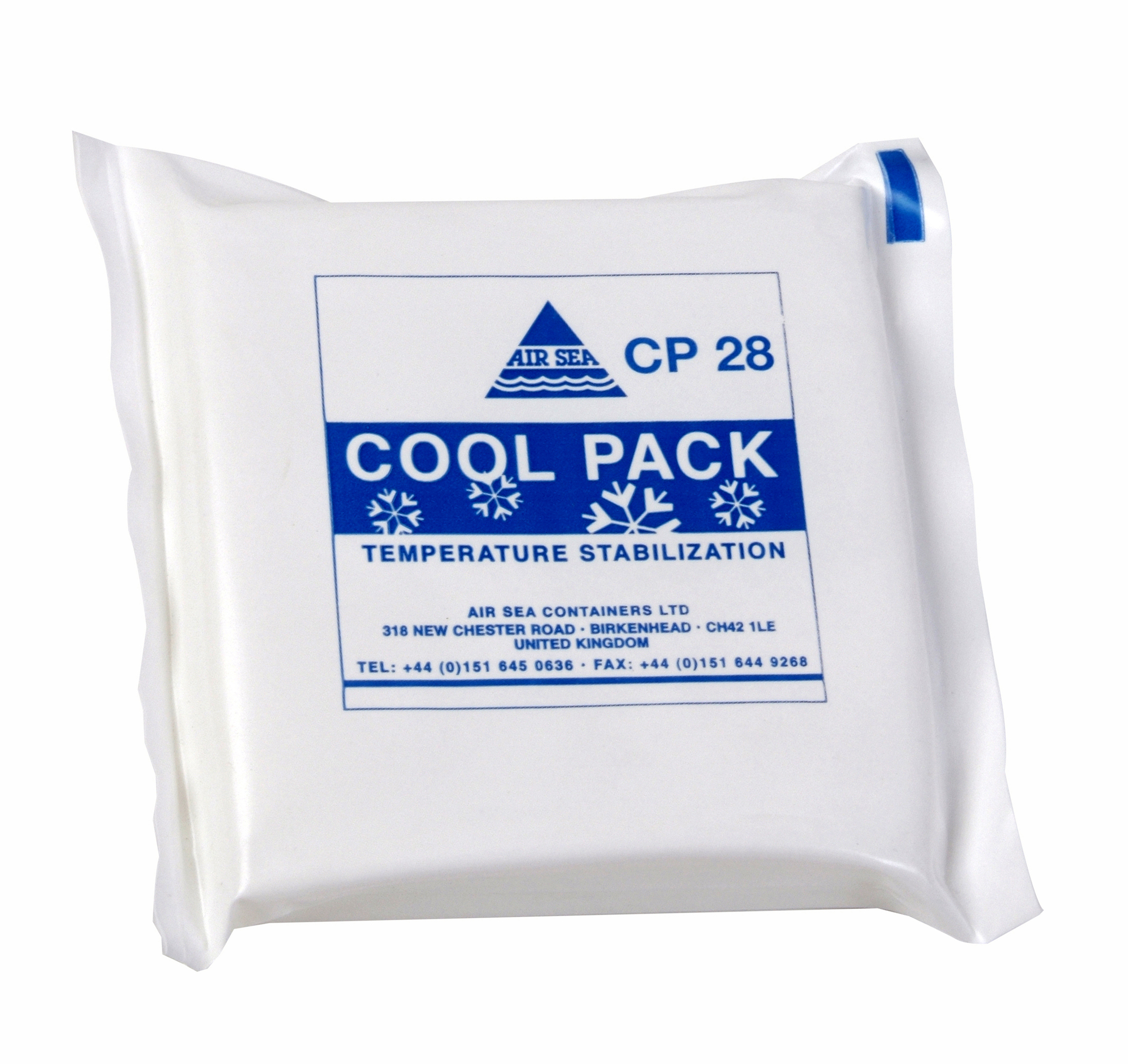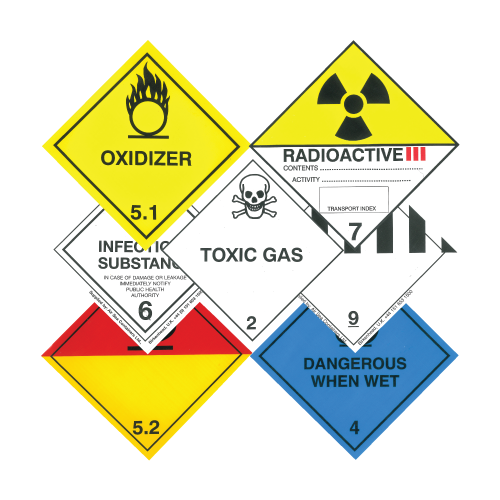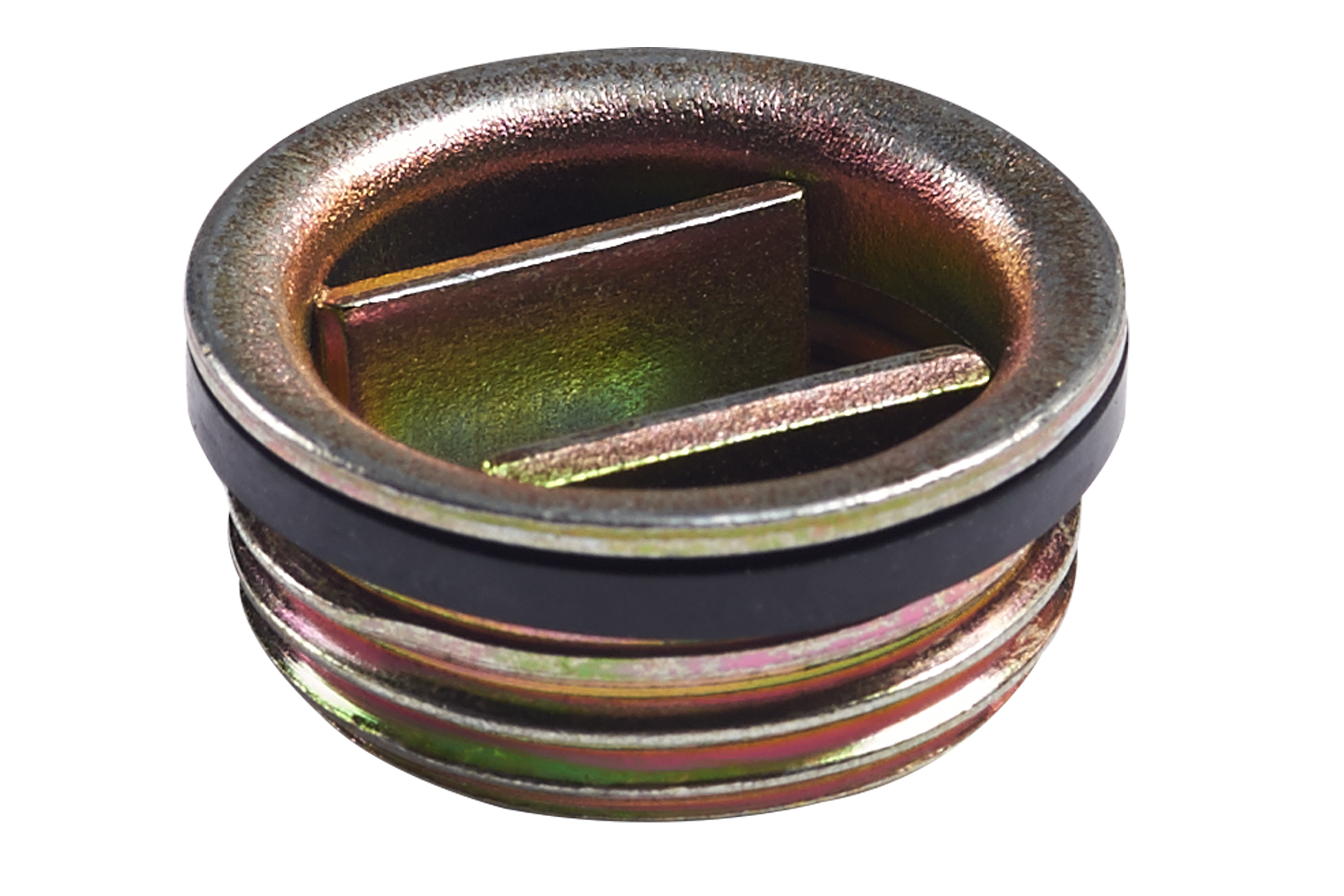Shipping lithium batteries compliantly can be a complicated task, regulations differ and can be difficult to decipher. Here we have summarised the different types of lithium batteries and the main rules around shipping these batteries.
We have provided a helpful table to display UN numbers and their relevant packing instructions as a quick reference guide. If you are ready to ship your batteries, check out our range of lithium battery packaging.
What are lithium batteries?
For the purpose of this article, we focus on the battery types featured in the dangerous goods regulations, which can be separated into the following two categories:
Lithium Metal Batteries and Cells
Batteries and cells that have lithium metal or lithium compounds as an anode.
They are non-rechargeable and you will often find lithium metal batteries in devices such as calculators, watches, car key fobs and cameras.
Lithium-Ion Batteries and Cells
These are secondary batteries (rechargeable) where the lithium is only present in an ionic form in the electrolyte. Lithium polymer batteries are also included in this category.
These rechargeable lithium-ion batteries can be found in mobile phones, laptops, tablets, power tools, ebikes and escooters to name a few.

Different stages of a battery lifecycle
It is worth remembering there are different stages in a lithium battery’s lifecycle and these come with different packing instructions. Generally, cells and batteries must be tested in accordance with the UN Manual of Tests and Criteria Part III Subsection 38.3. There are however, other types of batteries including; prototypes, damaged or defective and waste batteries requiring disposal/ recycling.
Lithium Battery Classification
Lithium batteries are classified in Class 9 – Miscellaneous dangerous goods as:
- UN 3090, Lithium metal batteries; or
- UN 3480, Lithium-ion batteries
or, if inside a piece of equipment or packed separately with a piece of equipment to power that equipment as:
- UN 3091, Lithium metal batteries contained in equipment; or
- UN 3091, Lithium metal batteries packed with equipment
- UN 3481, Lithium-ion batteries contained in equipment; or
- UN 3481, Lithium-ion batteries packed with equipment.
UN Number and Packing Instructions
Below we have provided a summary of UN numbers and their corresponding Packing Instruction for each mode of transport. Shippers must refer to the relevant transport regulations for detailed regulations, including applicable Special Provisions for each UN number.
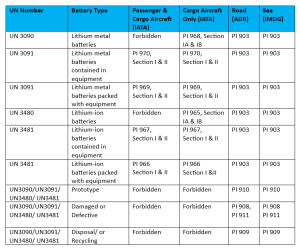
It is important to note the prohibitions and restrictions for the transport of lithium batteries by air.
Lithium-Ion Batteries UN3480
Lithium-ion cells and Batteries shipped by themselves – UN3480 (not contained in or packed with equipment) are forbidden for transport as cargo on passenger aircraft. They can be shipped on cargo aircrafts when packed in accordance with Packing Instruction 965.
Lithium-Ion Batteries UN3480 Restrictions
Lithium-ion Cells and Batteries (UN3480) must be shipped at a state of charge (SoC) not exceeding 30% of their rated capacity. Cells and batteries at a SoC of higher than 30% can only be shipped with the approval of the State of Origin and the State of the Operator, see Special Provision A331.
Lithium Metal Batteries UN3090
Lithium Metal Cells and Batteries shipped by themselves – UN3090 (not contained in or packed with equipment) are forbidden for transport as cargo on passenger aircraft. They can be shipped on cargo aircrafts when packed in accordance with Packing Instruction 968.
Prototype lithium cells and batteries transported by air that have not passed the UN 38.3 Tests
Pre-production prototypes of lithium batteries or cells that have not been tested to the requirements of 38.3 of the UN Manual of Tests and Criteria, may be transported on cargo aircraft if approved by the appropriate authorities of the State of Origin and the State of the Operator. Packing Instruction 910 of the Supplement to the Technical Instructions must also be met, see Special Provision A88.
Shipping by air recalled, damaged or non-conforming cells or batteries
Lithium batteries identified by the manufacturer as being defective or damaged, with the potential of producing a dangerous evolution of heat, fire or short circuit are forbidden for air transport. This also applies to lithium cells or batteries installed inside equipment where the device has been recalled because of safety concerns of the cell or battery installed in the device, see Special Provision A154.
Shipping batteries by air for waste or recycling
Unless approved by the appropriate authority of the State of Origin and the State of the Operator, waste batteries and batteries being shipped for recycling or disposal are forbidden from air transport, see Special Provision A183.
Changes to come
At the time of writing there are a number of changes which may not necessarily come into effect for some time. UN has agreed to the introduction of new entries:
UN 3556 Vehicle Lithium-ion battery powered
UN 3557 Vehicle Lithium metal battery powered
Also, to consider, the introduction of Sodium ion batteries (not to be confused with Lithium-ion) but emerging as new technology that may have improved environmental benefits.
UN 3551 Sodium ion batteries
UN 3552 Sodium ion batteries contained in equipment or packed with equipment
UN 3558 Vehicle Sodium ion battery powered
Whilst the latest UN Model regulations Revision 23 has been published since June this year, the ADR will not introduce these until January 2025. However, Germany has proposed a multilateral agreement M 354 related to UN 3551 and UN 3552, as yet no other parties have agreed to this.
Longer term, there is work being done by a UN working group to overhaul the classification of Lithium Batteries which amongst many things we hope will make things simpler.
There is also a long-standing programme at the request of the International Civil Aviation Organisation (ICAO), ran by SAE known as SAE G-27 Lithium battery packaging performance. A committee with the responsibility to develop packaging standards for the safe transport of Lithium batteries on aircraft. Primarily to address the concerns on lithium batteries that go into thermal runaway and the potential to reintroduce certain battery types back as cargo on passenger aircraft.
The next meeting is in November, how soon we can expect to see anything materialise from this is not clear at this stage.
Adhering to Regulations
This guide has been produced to provide a quick reference tool for those wishing to find more information about lithium battery transport requirements. It is not a comprehensive list of Dangerous Goods Transport Regulations; shippers must ensure they read the relevant Mode of Transport Regulations and applicable Packing Instructions in full to ensure all transport requirements are met.
We can guide you in finding the right packaging for your needs. For more information on packaging suitable for Lithium batteries view our range here.
Read our Introduction to shipping lithium batteries internationally here.
Information correct at time of publishing, 16 October 2023.
Source IATA, ADR & IMDG
 UK
UK








